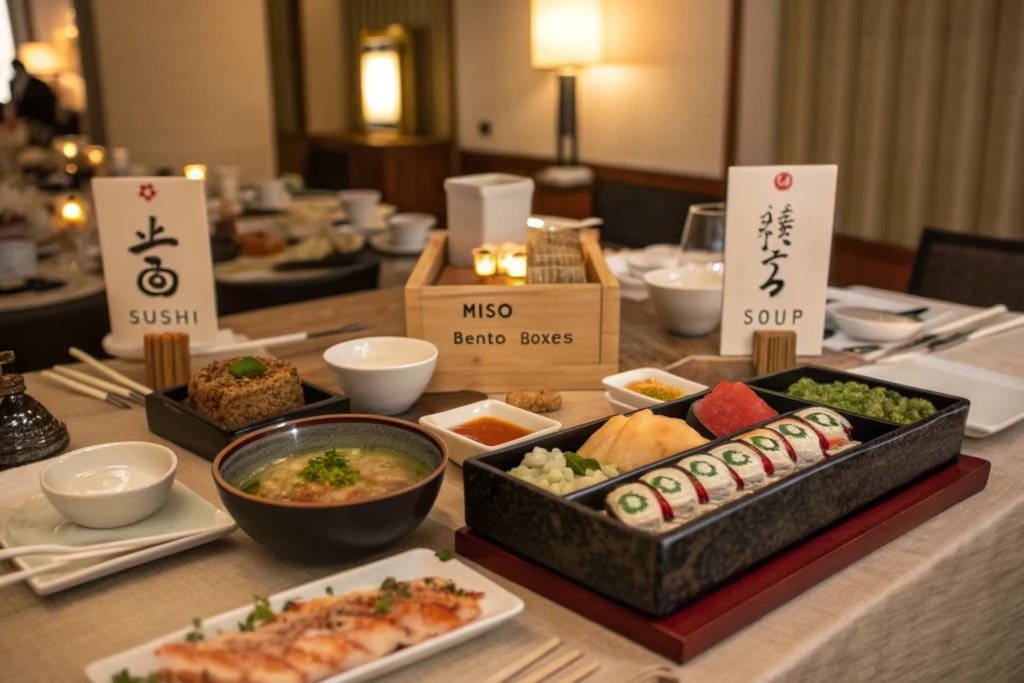Introduction
When delving into the rich tapestry of Japanese cuisine, understanding the language behind the dishes enhances both appreciation and communication. The japanese letter for food not only refers to the kanji characters used to denote food but also encompasses the terminology that brings Japanese culinary delights to life. Whether you’re a language enthusiast, a culinary explorer, or someone keen on ordering authentic Japanese dishes, grasping these characters and terms is invaluable. This comprehensive guide will unravel the intricacies of the Japanese script related to food, explore its historical context, provide practical examples, and answer frequently asked questions to elevate your Japanese culinary experience.
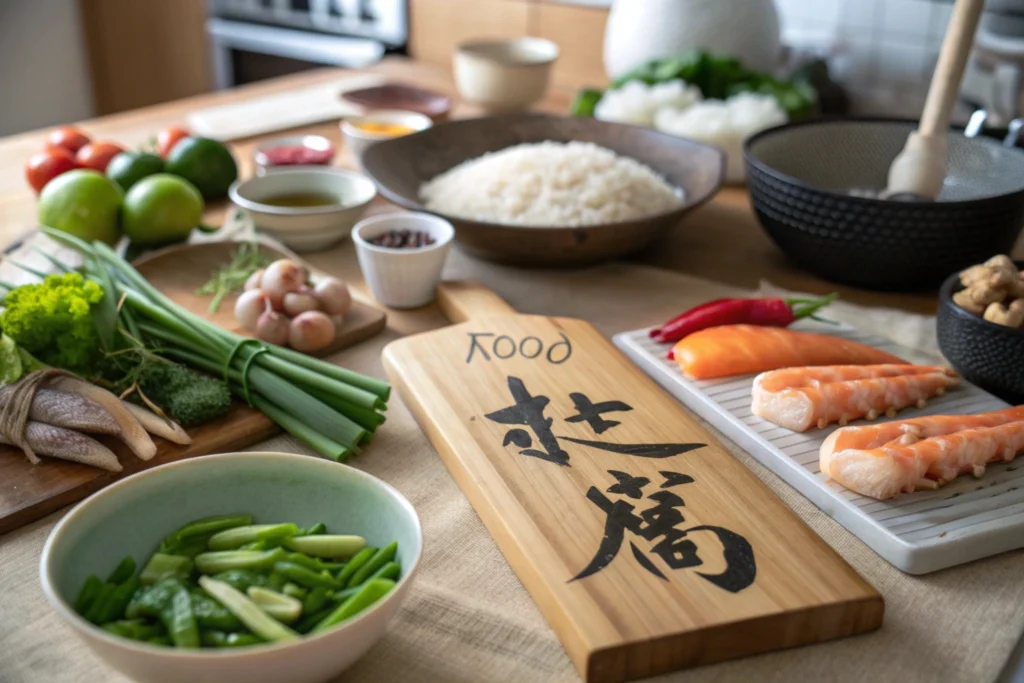
Defining the Japanese Letter for Food
The Japanese language employs three scripts: kanji, hiragana, and katakana. When referring to the japanese letter for food, we primarily focus on kanji, the logographic characters borrowed from Chinese. Understanding the kanji for food not only aids in reading menus but also provides insights into the cultural significance of various dishes.
Kanji Characters for Food
- 食 (shoku/taberu): The most common kanji for food, meaning “to eat.”
- 飯 (han/meshi): Often used to denote cooked rice or meals in general.
- 料理 (ryouri): Refers to cooking or cuisine.
- 飲食 (inshoku): Means “eating and drinking.”
Hiragana and Katakana Representations
While kanji are used for nouns and main words, hiragana and katakana scripts serve different purposes:
- Hiragana (ひらがな): Used for grammatical elements and native Japanese words.
- Katakana (カタカナ): Primarily used for foreign loanwords, onomatopoeia, and emphasis.
Understanding these scripts is crucial for anyone looking to deepen their knowledge of Japanese culinary terms or navigate menus with confidence. Whether it’s ordering sushi, ramen, or other delicacies, knowing the right characters and terms can make the dining experience more seamless and enjoyable.
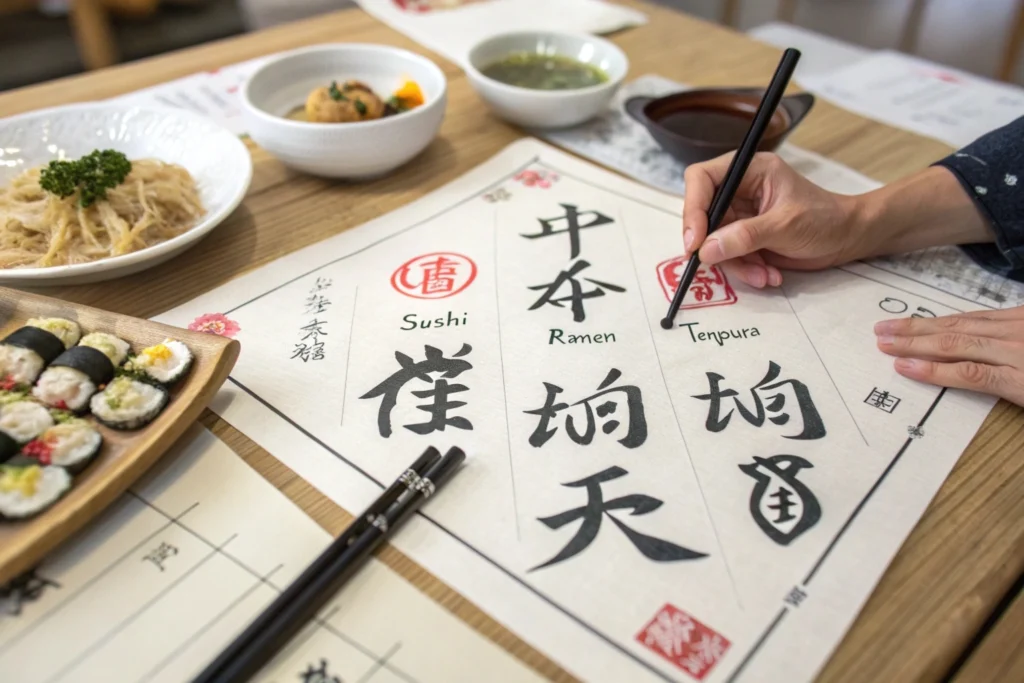
The Significance of Kanji in Japanese Cuisine
Kanji characters carry deep meanings and historical contexts that reflect Japan’s culinary evolution. Each character not only represents a word but also embodies the essence and cultural importance of the dish it denotes.
Historical Context
The integration of kanji into Japanese cuisine dates back centuries, influenced by trade and cultural exchanges with China. Over time, these characters have evolved, incorporating unique Japanese elements while retaining their original meanings.
Cultural Importance
Food in Japan is more than sustenance; it’s an art form and a way to connect with nature and tradition. Kanji characters often symbolize the seasonality and presentation of dishes, emphasizing the aesthetic and sensory experiences central to Japanese dining.
Modern Usage
Today, kanji are omnipresent in Japanese restaurants, from menu boards to signage. Understanding these characters enhances the ability to appreciate the nuances of Japanese cuisine and fosters better communication when dining out or exploring recipes.
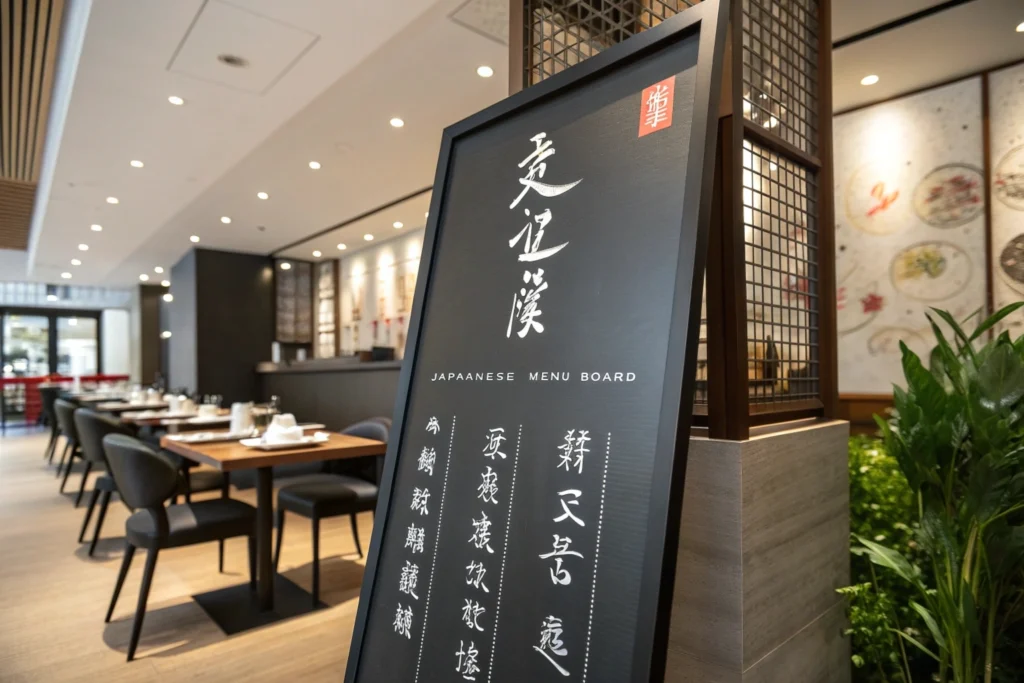
Practical Examples: Kanji in Everyday Japanese Meals
To illustrate the practical application of kanji in Japanese meals, let’s explore common dishes and their corresponding characters. This understanding not only aids in recognizing dishes but also enriches the dining experience by connecting language with cuisine.
1. Sushi (寿司)
- Kanji Characters: 寿司
- Meaning: “Longevity” (寿) and “sushi” (司) combine to symbolize a wish for a long life, reflecting the cultural significance of sushi in celebrations and special occasions.
2. Ramen (ラーメン)
- Kanji Characters: none traditionally; written in katakana as ラーメン
- Meaning: Ramen is a borrowed term from Chinese, hence the use of katakana. It represents the popularity and adaptation of Chinese noodles into Japanese cuisine.
3. Tempura (天ぷら)
- Kanji Characters: 天ぷら
- Meaning: “Heavenly” (天) and “purá” (plura from Portuguese ‘pá’ meaning bread) indicate the light and airy nature of tempura, a dish introduced to Japan by Portuguese missionaries.
4. Bento (弁当)
- Kanji Characters: 弁当
- Meaning: “Bento” combines characters meaning “speech” or “expression” (弁) and “tray” or “container” (当), highlighting the artistry involved in preparing and presenting a bento box.
5. Miso Soup (味噌汁)
- Kanji Characters: 味噌汁
- Meaning: “Miso” (味噌) refers to the fermented soybean paste used, and “soup” (汁) signifies the liquid broth, a staple in Japanese meals.
For those interested in expanding their Japanese culinary vocabulary, explore our japanese-curry-recipe-one-piece to learn about the rich flavors and kanji associated with Japanese curry.
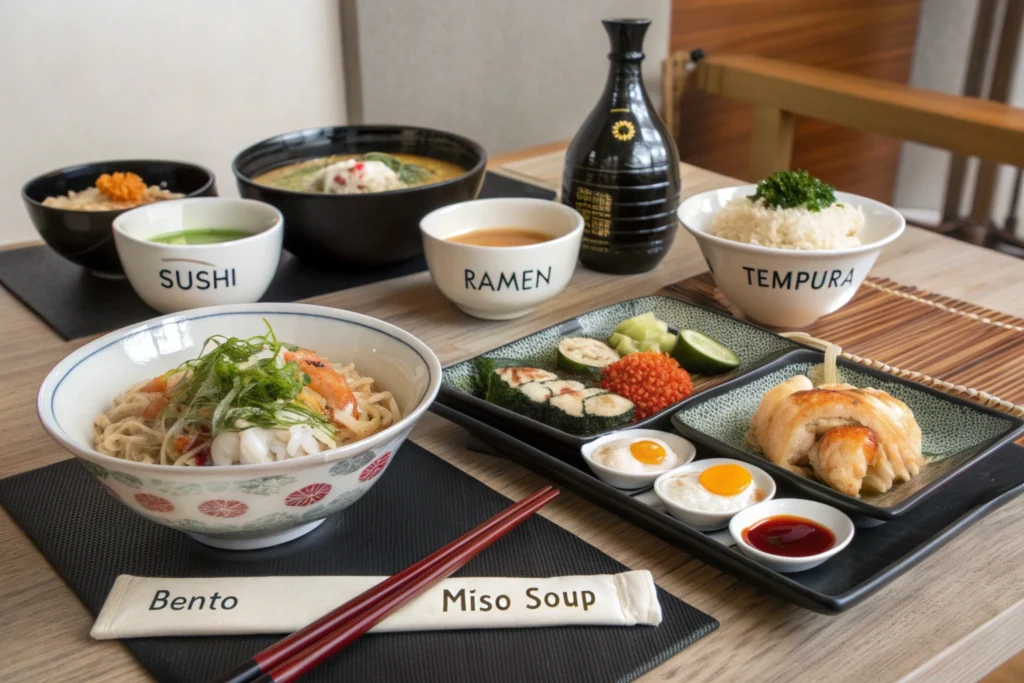
History and Examples
The Evolution of Kanji in Japanese Food Terminology
The use of kanji in Japanese food terminology has a rich history intertwined with cultural exchanges and the evolution of Japanese society. Understanding this history provides deeper insights into the significance of each character and its connection to the dishes they represent.
Early Influences
Kanji were introduced to Japan from China around the 5th century, bringing with them not just language but also culinary concepts. Early Japanese cuisine adopted many Chinese dishes, and with them, the kanji to describe them.
Adaptation and Integration
Over centuries, Japan adapted these culinary influences, modifying recipes and introducing new techniques. As a result, many kanji characters associated with food evolved to reflect uniquely Japanese interpretations and presentations.
Modern Developments
In contemporary Japan, kanji continue to play a vital role in culinary terminology. The globalization of Japanese cuisine has also led to the adaptation of kanji for new dishes, while traditional terms remain steadfast, preserving the cultural heritage.
Iconic Examples of Kanji in Japanese Cuisine
- Sashimi (刺身)
- Kanji Characters: 刺身
- Meaning: “Pierced body” (刺) and “body” (身) emphasize the technique of slicing fresh fish.
- Yakitori (焼き鳥)
- Kanji Characters: 焼き鳥
- Meaning: “Grilled bird” (焼き means grilled, and 鳥 means bird) signifies the popular street food of skewered chicken.
- Okonomiyaki (お好み焼き)
- Kanji Characters: お好み焼き
- Meaning: “Grilled as you like” (お好み means “as you like” and 焼き means “grilled”) reflects the customizable nature of this savory pancake.
- Udon (うどん)
- Kanji Characters: none traditionally; written in hiragana as うどん
- Meaning: Udon noodles are a staple, often enjoyed in various broths and toppings.
- Kaiseki (懐石)
- Kanji Characters: 懐石
- Meaning: “Prepared stone” (懐 means “embracing” or “intimate,” and 石 means “stone”) represents the traditional multi-course meal emphasizing seasonal ingredients and presentation.
To delve deeper into traditional Japanese cooking techniques, check out our traditional-japanese-desserts-recipe that complements savory dishes with sweet delights.
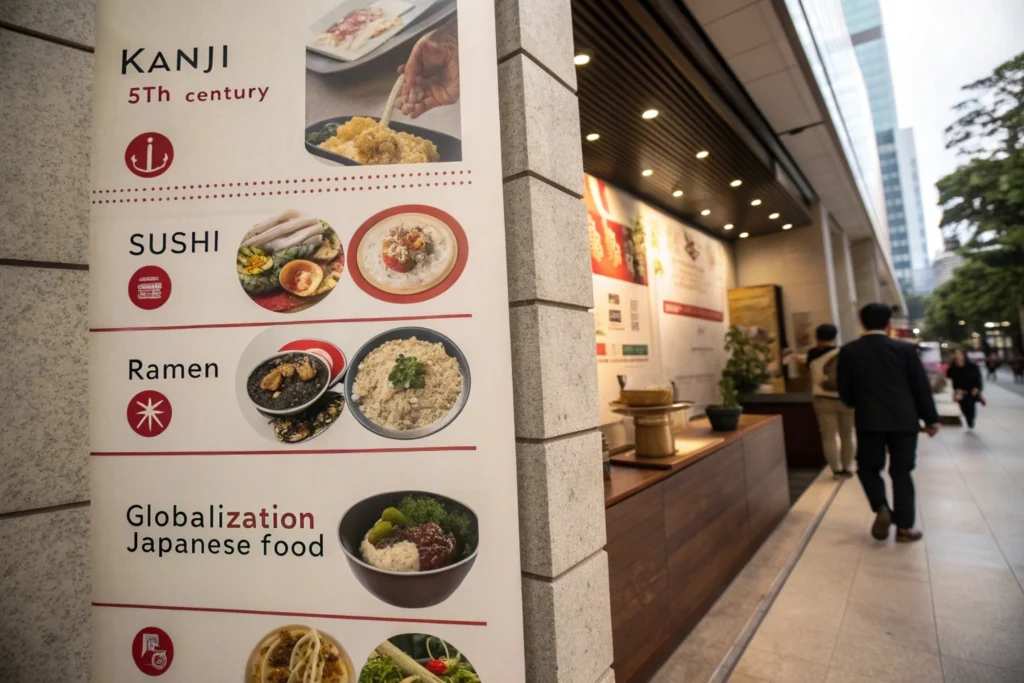
Practical Examples/Use Cases
1. Ordering at a Japanese Restaurant
Understanding the kanji for food can significantly enhance the dining experience. When you see 寿司 (sushi) or ラーメン (ramen) on a menu, recognizing these characters allows for easier navigation and selection of dishes that suit your preferences.
2. Learning Japanese Cuisine at Home
For home cooks interested in Japanese cuisine, knowing the kanji helps in following authentic recipes. For instance, recognizing 味噌汁 (miso soup) ensures you understand the ingredients and preparation methods correctly.
3. Teaching Japanese to Children
Educators and parents can use kanji to teach children about Japanese food, making learning interactive and culturally enriching. Associating characters with dishes like 弁当 (bento) or 天ぷら (tempura) fosters both language skills and culinary interest.
4. Enhancing Travel Experiences
Travelers visiting Japan can benefit from knowing the kanji for food, making it easier to read menus, signs, and labels in restaurants. This knowledge facilitates a more immersive and enjoyable culinary journey.
Explore more about Japanese cooking with our japanese-steak-recipe that incorporates traditional kanji terms for ingredients and cooking methods.
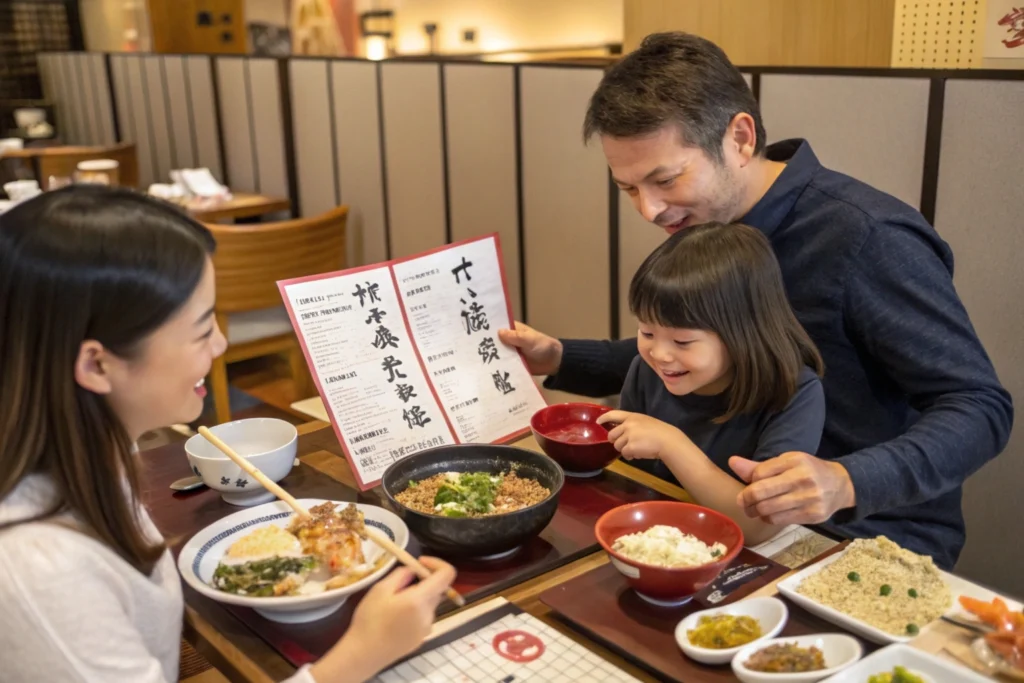
FAQs
Q1: What is the Japanese symbol for food?
The most common kanji symbol for food is 食 (shoku/taberu). This character is used in various contexts related to eating and meals.
Q2: How do you write food in Japanese?
Food can be written in different ways depending on the context:
- Kanji: 食
- Hiragana: たべもの (tabemono)
- Katakana: フード (fuudo) for foreign foods
Q3: What is the Japanese term for food?
The general term for food in Japanese is 食べ物 (tabemono), combining the kanji for “eat” (食) and the suffix for things or objects (物).
Q4: What is the Japanese motto for food?
While there isn’t a universal motto, the concept of “食文化” (shokubunka) emphasizes the cultural significance of food in Japanese society, highlighting the connection between cuisine, tradition, and community.
Q5: Are there different kanji for specific types of food?
Yes, specific dishes often have their own kanji. For example:
- 寿司 (sushi)
- 天ぷら (tempura)
- 弁当 (bento)
For more insights into Japanese culinary terminology, visit our japanese-cookies page to explore sweet kanji terms and recipes.
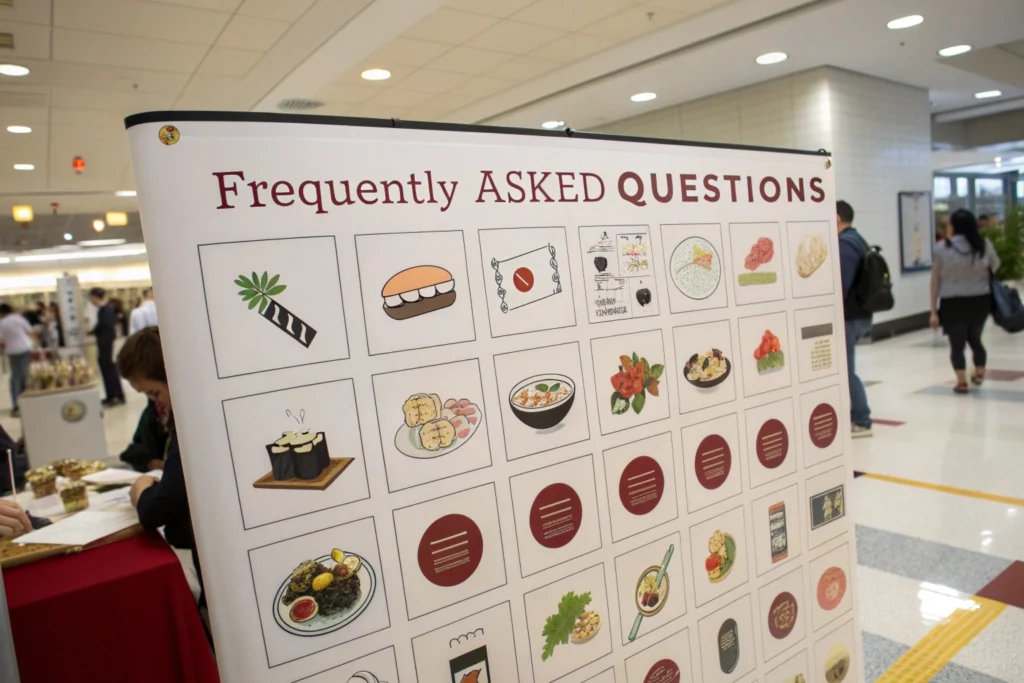
Conclusion
Mastering the japanese letter for food enriches your understanding of Japanese cuisine and culture. From recognizing kanji characters on menus to appreciating the historical and cultural significance behind each dish, this knowledge transforms ordinary dining into a meaningful experience. Whether you’re a language learner, a culinary enthusiast, or a traveler, integrating kanji into your exploration of Japanese food opens doors to deeper connections and enhanced appreciation.
Embrace the journey of learning Japanese culinary terms and immerse yourself in the artistry that defines Japanese cuisine. For those eager to experiment in the kitchen, our traditional-japanese-desserts-recipe offers sweet endings that beautifully complement savory dishes. Continue to explore, learn, and savor the rich flavors and cultural narratives that make Japanese food truly extraordinary.
